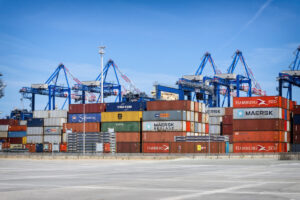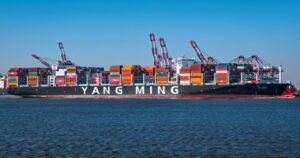The process for declaring the verified gross mass (VGM) of a shipping container is much more complicated than previously thought, since multiple departments, including the shipper, will be involved in weighing the contents of a container before this information is passed onto carriers and terminals, which could be an extremely time-consuming process, according to the Journal of Commerce.
Due to come into effect on July 1, 2016, the new Safety of Life at Sea regulation, is being enforced by the International Maritime Organization, will require the contents of a container to be accurately verified before it is shipped.
Watch: Container Weighing Explained Part 1
Michelle Cummings, Vice President of ocean services and partners at GT Nexus, said:
“Many shippers and carriers aren’t certification ready — that is, they don’t have the functionality or processes in place today to easily comply.
“Considering a single carrier may ship 50,000 or more boxes out of a major port monthly, faxing VGM isn’t realistic.”
Technical Paper: Container Weighing Explained
Greg Howard, CEO of neutral, non-vessel operating common carrier Carotrans, said: “Since there is not a uniform verified weight document, we are creating our own and providing it to customers for them to complete and provide to us with the shipping document.”
Cummings continued: “A number of carriers, for example, use cloud technology to offer an e-commerce platform to handle customer transactions. Electronic data and connectivity, in these cases, will ease the burden on carriers and their customers when the new certification requirements kick in.
Watch: Container Weighing Explained Part 2
“Many have deployed cloud technology platforms to serve as an easy-to-use, transparent tool to facilitate bookings and shipping documentation. The real power is beyond these point benefits — in the essence of transparency and collaboration fostered at the core of the relationship. This will be a strategic advantage in the years ahead, with implications far beyond the IMO requirements.”







